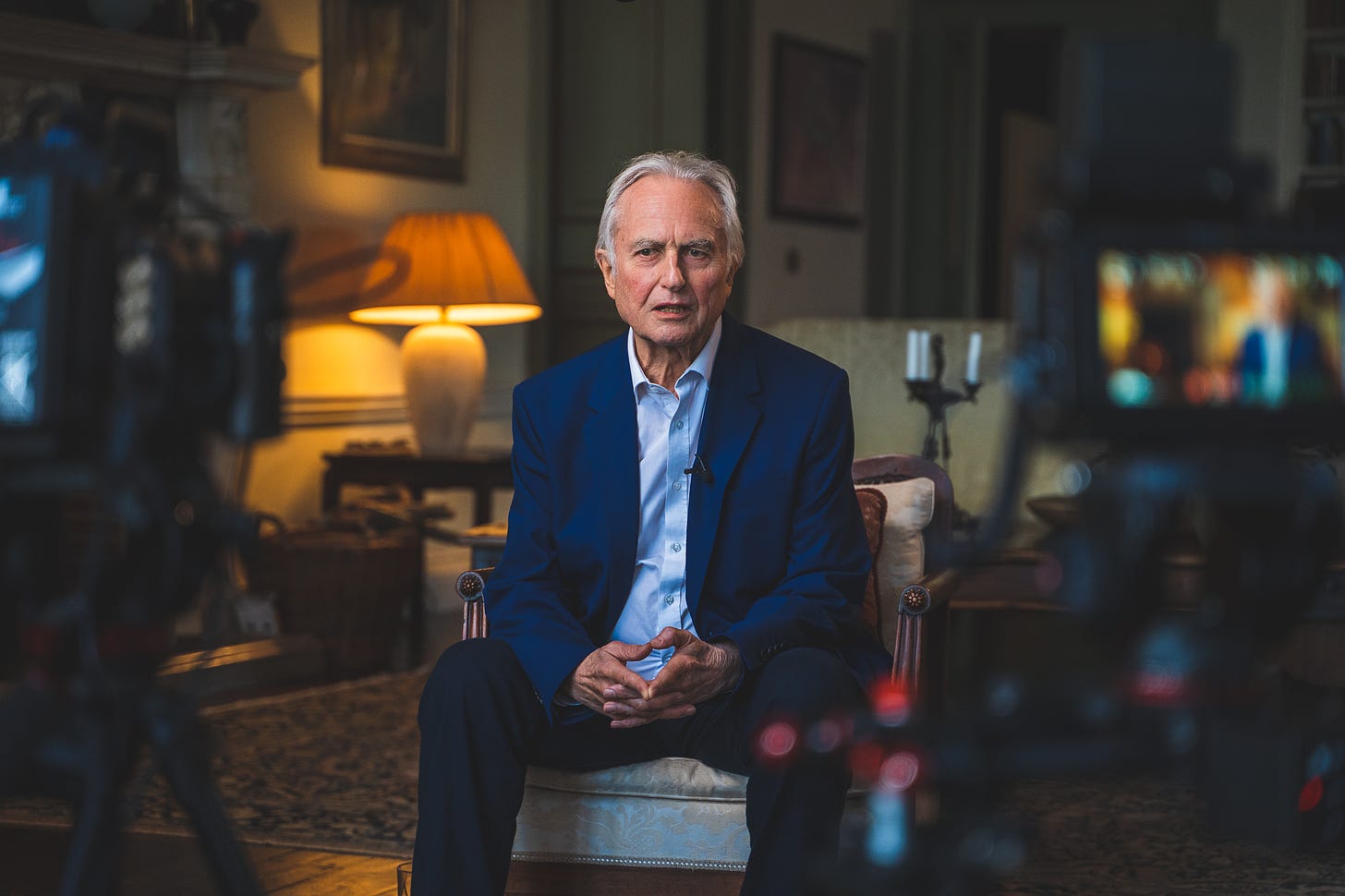Readers: Richard Dawkins is among us.
The Oxford biologist launched himself on Substack this week. Yes, he’s still going—the famed, Emperor Palpatine-like author of The God Delusion, and the last of the New Atheism’s Four Horsemen still ahorse (at least, the last one riding the same horse as he did in 2006). Christopher Hitchens is dead; Sam Harris is dispensing wellness advice on the dark web; Daniel Dennett has evaporated. Dawkins now has just the faintest air of Peter Jackson’s Theoden, mustering a fading people: “Where now the horse and the rider? Where is the horn that was blowing?” Where indeed.
Dawkins hasn’t exactly been absent from public life in recent years, but shifting cultural trends have sidelined him. The aggressively fact-driven nature of the New Atheism doesn’t play well these days. Yet here he is again, at the age of 82, trying to use The Current Thing to replant the New Atheism’s tattered flag—despite (or, really, because of) the fact that the movement comprehensively failed to bring about a golden age of rationality, and has been replaced in the cultural zeitgeist by fact-averse currents like identity politics and social media misinformation.
A friend has repeatedly remarked to me of late that, among many conservatives and “sensible centrists”, there is now a tangible nostalgia for the public life of some time around 2005—the late Blair years. That was Dawkins’ heyday: The God Delusion came out in 2006. The popularity of the Rest is Politics podcast fits this theory too—Alastair Campbell, Blair’s spin doctor, co-hosts the show, and he and Rory Stewart supposedly offer a refreshing vision of public life for Centrist Dads. The first UK civil partnership ceremonies were also held in late 2005, and, given the madness of the LGBT agenda today, there’s a certain wistful sense among many secular conservatives and centrists now that this was probably about as far as it all needed to go. “If only we could go back to 2005 or so”, they say—a time of sensible, rational public dialogue, and moderate progress.
The whole format of Dawkins’ Substack seems an attempt to affect such a return. This is how he introduces it:
Rather than write a manifesto in the form of an essay, I have chosen to cast it as a series of propositions or questions, invariably followed by the word “Discuss”. It is not my intention to pose these discussion points to my guests. Rather I intend, by this repetition of “Discuss”, to convey the atmosphere that I hope will pervade both forums, podcast and Substack. It should be an atmosphere of continual questioning, recurrent uncertainty, and I hope stimulating dialogue. “Discuss” really means discuss.
He then gives a long list of suggested topics which read like hard-to-answer A-Level essay questions:
“There is no such thing as your truth as distinct from my truth. “There is just the truth, and that means evidence-based scientific truth.” Discuss.
“Truth is not obtained by tradition, authority, holy books, faith or revelation. Truth is obtained by evidence and only evidence.” Discuss.
“Truth is not obtained by private feelings but by publicly testable evidence.” Discuss.
Discuss, discuss, discuss. This is what many long for: a return to discussion. The histrionic cancellations of the Left and the vile online pile-ons of the Right have exhausted us all.
Dawkins’ persistence is admirable. Who knows—perhaps we are in for a renaissance of Late Blairite Centrism (and if it resolves the cliffhanger of the last Gavin & Stacey Christmas special, I may not mind all that much).
But, in his latest comeback, Dawkins has failed to learn any of the lessons about what led to his fall from the public eye in the first place. It’s the same old routine. But if the New Atheism so swiftly collapsed when wokeism and identity politics came onto the scene, why would anyone suppose it can mount a counter offensive at this point?
Keep reading with a 7-day free trial
Subscribe to The New Albion to keep reading this post and get 7 days of free access to the full post archives.



